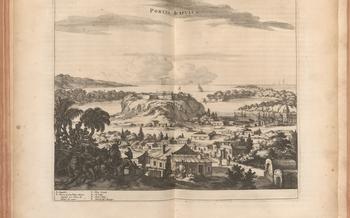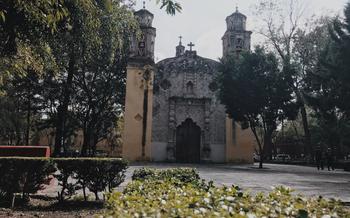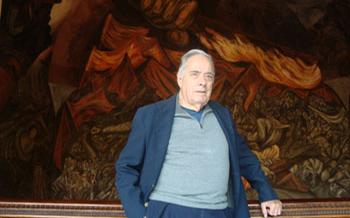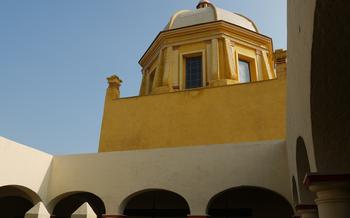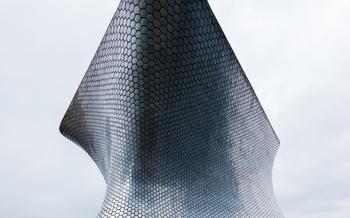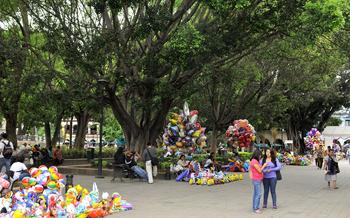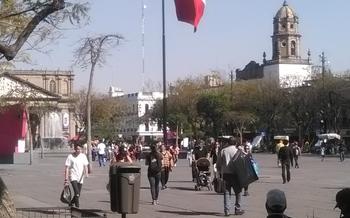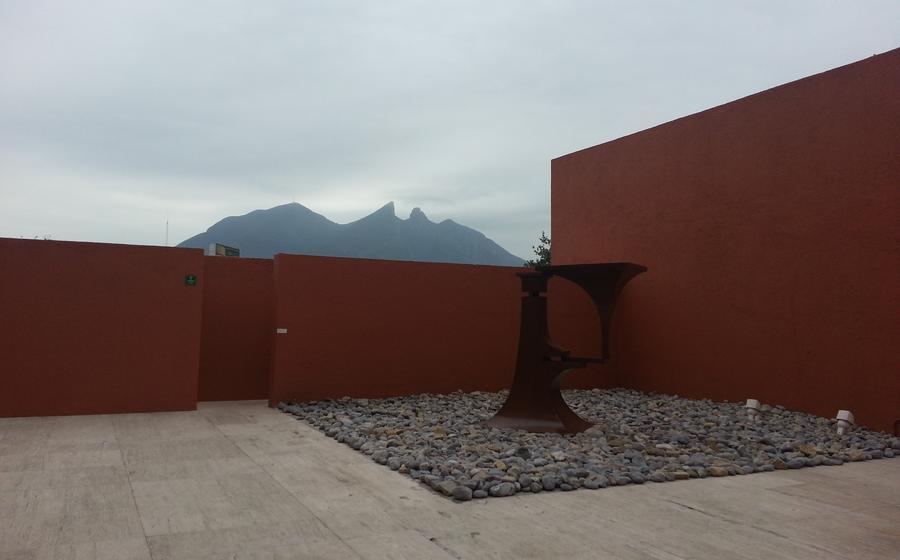
Museo de la Silla
- Museo de la Silla
- Exhibits
- Collections
- History of the Saddle
- Materials and Techniques
- Saddles of the World
- Interactive Experiences
- Workshops and Classes
- Events and Programs
- Guided Tours
- Research and Education
- The Saddle in Art and Literature
- Museum Shop
- Accessibility
- Insider Tip
Museo de la Silla
History of the museum: The Museo de la Silla, also known as the Museum of the Saddle, is a unique institution in Monterrey, Mexico, dedicated to preserving and showcasing the history and craftsmanship of the saddle. Founded in 1977, the museum's mission is to celebrate the rich saddle-making traditions of Mexico and the world.
Collection of saddles: Housing a vast collection of over 2,000 saddles from various regions and time periods, the museum offers visitors a glimpse into the evolution of this essential equestrian equipment. From ancient saddles used by indigenous cultures to elaborate and ornate saddles crafted by skilled artisans, the museum's collection is a testament to the cultural significance and diversity of saddles.
Workshops and demonstrations: To complement the exhibits, the museum offers workshops and demonstrations where visitors can witness skilled artisans creating saddles using traditional and contemporary techniques. These workshops provide a hands-on experience and allow visitors to delve deeper into the art of saddle making and the intricate craftsmanship involved.
Guided tours: Guided tours of the museum are available to enhance the visitor experience. Led by knowledgeable guides, these tours offer insights into the history, significance, and symbolism of the saddle, providing a deeper understanding of the role it has played in different cultures throughout history.
Exhibits
The Museo de la Silla offers a diverse range of exhibits that showcase the rich history and cultural significance of the saddle. Thematic exhibitions explore specific aspects of saddle making and use, such as the evolution of the saddle, the role of the saddle in different cultures, and the symbolism of the saddle. These exhibitions often feature rare and unique saddles from the museum's collection, as well as interactive displays and educational materials.
Temporary exhibitions bring new and exciting perspectives to the museum. These exhibitions may focus on the work of contemporary saddle makers, the history of a particular saddle style, or the cultural significance of the saddle in a specific region. Temporary exhibitions offer visitors the opportunity to see new and innovative saddles, as well as learn about different aspects of saddle making and use.
Interactive exhibitions engage visitors of all ages in the world of saddles. These exhibitions may include hands-on activities, such as saddle making demonstrations, or virtual reality experiences that allow visitors to explore the history of the saddle in a unique and immersive way. Interactive exhibitions are a great way for visitors to learn about saddles in a fun and engaging way.
Educational exhibitions are designed to teach visitors about the history, culture, and technology of the saddle. These exhibitions may include displays of historical saddles, as well as information about the materials and techniques used in saddle making. Educational exhibitions are a valuable resource for students and researchers, as well as for anyone who is interested in learning more about saddles.
Collections
The Museo de la Silla boasts an impressive and diverse collection of saddles, offering a captivating insight into the rich history, craftsmanship, and cultural significance of this equestrian equipment. The museum showcases a wide variety of saddles, ranging from historical pieces that have witnessed the passage of time to modern saddles that embody contemporary equestrian trends.
Historical saddles, adorned with intricate carvings and handcrafted details, transport visitors back to bygone eras. These saddles, meticulously preserved and restored, narrate the stories of their journeys, having accompanied riders through battles, explorations, and the vast landscapes of the Americas.
Modern saddles, sleek and meticulously engineered, reflect the technological advancements and innovations that have revolutionized the equestrian world. Designed to enhance comfort, performance, and safety, these saddles are works of art in their own right, showcasing the creativity and ingenuity of contemporary artisans.
The museum's collection also celebrates the cultural diversity of saddles from around the world. From the elaborately decorated saddles of Mexico, adorned with silver and intricate designs, to the minimalist saddles of the American West, each saddle reflects the unique traditions and heritage of its respective region. Visitors can marvel at the intricate craftsmanship and symbolism embedded in these saddles, which have played a vital role in the lives and cultures of people across the globe.
History of the Saddle
The saddle is an essential and ancient tool used in equestrianism, and its evolution reflects the development of human civilizations. The earliest saddles appear in the Near East and Central Asia dating back to the 3rd millennium BCE, consisting of simple pads for comfort and stability. These saddles evolved over time with saddle trees, stirrups, and horn, and the designs varied greatly across cultures.
In the Americas, the indigenous peoples developed their own saddle designs, often using leather and wood. The Spanish conquistadors introduced the European saddle to the Americas, which influenced the development of the modern Western saddle. The Western saddle is designed for working with cattle and features a deep seat, high cantle, and a horn for roping.
In Europe, the evolution of the saddle was influenced by military needs and resulted in the development of saddles for jousting, hunting, and warfare. The English saddle, designed for fox hunting, emerged in the 18th century and is known for its flat seat and forward-cut flaps.
The saddle has played a significant role in various cultures throughout history, from the nomadic tribes of Central Asia to the European cavalry. It has been an essential tool for transportation, warfare, hunting, and herding livestock. The saddle has also been a symbol of status and wealth, and its design often reflects the cultural and artistic traditions of the region where it is made.
Materials and Techniques
The Museo de la Silla showcases the intricate art of saddle making, highlighting the diverse materials and techniques employed by skilled artisans throughout history.
Traditional saddles were crafted using natural materials such as leather, wood, and metal. Leather, the primary material, was meticulously tanned and treated to achieve the desired strength, flexibility, and durability. Wood, often sourced from local trees, provided a solid foundation for the saddle frame, while metal, such as iron or silver, was used for decorative elements and reinforcements.
Saddle making involves a combination of traditional and modern techniques. Traditional techniques, passed down through generations of artisans, include hand-stitching, carving, and embossing. These techniques require great skill and patience, as each saddle is meticulously crafted to ensure both form and function.
In recent years, modern techniques have been introduced to complement traditional methods. Machine stitching, for example, has increased efficiency while maintaining the high standards of quality. Computer-aided design (CAD) and laser cutting have also been adopted to create intricate patterns and designs with greater precision.
The Museo de la Silla offers a unique opportunity to learn about the evolution of saddle-making techniques and the artistry that goes into creating these essential equestrian tools.
Saddles of the World
Museo de la Silla boasts a diverse collection of saddles from various regions, representing the richness and diversity of horse riding traditions worldwide. Visitors can discover and compare saddles from different cultures, gaining a deeper understanding of their historical, social, and cultural significance.
The museum showcases saddles from the Americas, Europe, Asia, and Africa, each with unique characteristics and designs reflecting the region's geography, climate, and riding styles. From the ornate and elaborately decorated saddles of the Middle East to the practical and functional saddles of the American West, the collection provides a comprehensive overview of saddle making's global heritage.
By exploring the different saddles, visitors can appreciate the artistry, craftsmanship, and functionality embedded in each piece. The museum's collection highlights the evolution and adaptation of saddles to suit different terrains, riding disciplines, and cultural preferences. It offers a unique opportunity to learn about the various factors that influence saddle design and construction, providing a broader perspective on the history and significance of the saddle.
Interactive Experiences
The Museo de la Silla offers a range of interactive experiences that allow visitors to engage with the history and culture of the saddle in a hands-on and immersive way.
-
Hands-on activities: Visitors can try their hand at various saddle-making techniques, such as leather tooling, carving, and stitching. They can also learn about the different materials used in saddle making and how they are processed.
-
Virtual reality experiences: The museum offers virtual reality experiences that transport visitors to different regions of the world, where they can explore the diverse cultures and traditions associated with saddles.
-
Augmented reality experiences: Visitors can use augmented reality technology to view 3D models of saddles and learn about their history and construction. They can also see how saddles were used in different periods of history and by different cultures.
-
Interactive workshops: The museum offers interactive workshops for visitors of all ages, where they can learn about the history and culture of the saddle, as well as try their hand at various saddle-making techniques. These workshops are a great way to immerse yourself in the world of saddles and learn more about this fascinating subject.
Workshops and Classes
The Museo de la Silla offers a wide range of workshops and classes for visitors of all ages and skill levels. These workshops provide an opportunity to learn about the history and techniques of saddle making, as well as to create your own custom saddle.
Saddle Making Classes
These classes teach the basics of saddle making, from selecting the right materials to stitching the leather. Participants will learn how to make a variety of different types of saddles, including Western saddles, English saddles, and racing saddles.
Leatherworking Classes
These classes focus on the techniques of leatherworking, such as cutting, stitching, and stamping. Participants will learn how to make a variety of leather goods, such as belts, wallets, and purses.
Silversmithing Classes
These classes teach the basics of silversmithing, such as cutting, soldering, and polishing. Participants will learn how to make a variety of silver items, such as jewelry, belt buckles, and spurs.
Horseback Riding Classes
The museum also offers horseback riding classes for visitors of all ages. These classes are taught by experienced instructors and are designed to help riders improve their skills and confidence.
These workshops and classes are a great way to learn about the art of saddle making and to create your own unique saddle or leather goods. They are also a great way to meet other people who share your interest in horses and saddles.
Events and Programs
The Museo de la Silla is a dynamic and engaging space that offers a wide range of events and programs to visitors of all ages. These programs are designed to educate and entertain, providing a deeper understanding of the history, culture, and craftsmanship of saddles.
One of the most popular events is the monthly Saddle Making Workshop. This hands-on workshop allows participants to learn the basics of saddle making from experienced craftsmen. Visitors will have the opportunity to work with leather, wood, and metal to create their own unique saddle.
Conferences and lectures are also held regularly at the museum. These events feature experts in the field of saddlery who share their knowledge and insights on various topics related to saddles. Topics may include the history of saddles, the evolution of saddle design, or the use of saddles in different cultures.
Exhibitions and demonstrations are another highlight of the museum's programming. These events showcase the work of contemporary saddle makers and provide visitors with the opportunity to see the skills and techniques involved in saddle making. Demonstrations may include saddle making, leatherworking, or silversmithing.
Family events are also offered throughout the year, providing a fun and educational experience for visitors of all ages. These events may include hands-on activities, storytelling, or guided tours.
Guided Tours
The Museo de la Silla offers a variety of guided tours to enhance the visitor experience and provide deeper insight into the world of saddles. These tours are led by knowledgeable and experienced guides who share their expertise and passion for the subject.
Guided tours of the museum typically last for about an hour and cover the history of saddles, the different types of saddles, and the materials and techniques used in saddle making. Visitors will have the opportunity to see the museum's extensive collection of saddles up close and learn about their unique features and significance.
Specialized guided tours are also available for those interested in specific aspects of saddles or saddle making. For example, there are tours that focus on the history of the saddle in Mexico, the evolution of saddle design, or the different materials and techniques used in saddle making.
Guided tours for groups and school groups are also available. These tours can be customized to meet the specific interests and needs of the group. For example, a group of students studying history might be interested in a tour that focuses on the role of saddles in different cultures and civilizations.
By taking a guided tour, visitors can gain a deeper understanding of the history, significance, and craftsmanship of saddles. The knowledgeable and experienced guides will bring the exhibits to life and provide visitors with a truly immersive and educational experience.
Research and Education
Museo de la Silla is not just a place to admire saddles; it is also a center for research and education. The museum has a team of researchers who work on various projects related to the history and development of saddles. These projects range from the study of ancient saddles to the analysis of modern saddle designs. The museum also offers educational programs for students of all ages. These programs include guided tours, workshops, and lectures on various topics related to saddles. Additionally, the museum has a library and archives that are open to the public. The library contains a vast collection of books, articles, and other materials on saddles. The archives contain a collection of historical documents, photographs, and other artifacts related to saddles. These resources are available to researchers, students, and the general public.
The Saddle in Art and Literature
The saddle has been depicted and described in art and literature throughout history, reflecting its cultural and symbolic significance. In paintings, sculptures, and other works of art, saddles are often used to represent power, status, and wealth. They can also be seen as symbols of freedom, adventure, and exploration. In literature, saddles often play a key role in stories about cowboys, horses, and the American West. The saddle is a powerful symbol that can evoke a variety of emotions and associations, making it a popular subject for artists and writers alike.
One famous example of the saddle in art is the painting "The Charge of the Light Brigade" by William Hogarth. This painting depicts the British cavalry charge during the Crimean War, and the saddles of the horses are prominently featured. The saddles are depicted as sturdy and well-made, reflecting the importance of the cavalry in battle.
In literature, saddles are often used to represent the characters' journeys and adventures. In the novel "The Lord of the Rings," for example, the hobbit Frodo Baggins rides a pony named Bill, who wears a saddle made by the elves. The saddle is described as being "light and strong," and it helps Frodo to travel long distances on his quest to destroy the One Ring.
The saddle is a versatile and evocative symbol that can be used to represent a variety of different ideas and emotions. Its presence in art and literature reflects its deep cultural significance, and it continues to be a popular subject for artists and writers today.
Museum Shop
The Museo de la Silla features a well-stocked museum shop where visitors can find a variety of souvenirs and gifts to commemorate their visit. From postcards and magnets to books and publications, the shop offers a wide selection of items that cater to different tastes and budgets. Visitors can also purchase saddle-related merchandise, such as miniature saddles, keychains, and jewelry. For those seeking unique and handmade items, the shop showcases a collection of handcrafted saddles, bridles, and other leather goods made by local artisans. Whether you're looking for a small token to remember your experience or a special gift for a loved one, the museum shop has something for everyone.
Accessibility
The Museo de la Silla is committed to ensuring that all visitors have an enjoyable and accessible experience, regardless of their abilities. The museum is wheelchair accessible, with ramps and elevators providing access to all levels of the museum. Braille signage is available throughout the museum, and the exhibits are designed to be accessible to visitors with low vision. Audio guides are available in multiple languages, and ASL interpretation is available upon request. The museum staff is always willing to assist visitors with disabilities, and they can provide additional accommodations as needed.
Insider Tip
The best time to visit the Museo de la Silla is during the week, when there are fewer crowds. If you want to avoid the crowds altogether, visit the museum early in the morning or late in the afternoon.
One of the hidden gems of the museum is the rooftop terrace, which offers stunning views of the city. Be sure to check it out if the weather is clear.
After your visit to the museum, be sure to stop by one of the many local restaurants in the area. There are several great options to choose from, so you're sure to find something to your taste.
If you're looking for other things to do in Monterrey, be sure to visit the Parque Fundidora, the Museo de Arte Contemporáneo de Monterrey, or the Palacio de Gobierno. There's something for everyone in Monterrey, so you're sure to have a great time.
